- INTRODUCTION
- LECTURES
- A_Mart Kalm / Modernism In Estonia: From Industrialist’s Villa To Kolkhoz Centre
- B_David Crowley / The Fate of the Last Generation of Ultra-Modernist Buildings in Eastern Europe Under Communist Rule
- C_ Claes Caldenby / Urban Modernity. Nordic-Baltic Experiences
- D_Marija Drėmaitė And Vaidas Petrulis / Modernism In Soviet Lithuania: The Rise And Fall Of Utopia
- E_Anna Bronovitskaya / Glimpses Of Today In Visions Of Russian Avant-Garde Architects
- ESSAYS
- Ernestas Parulskis / Commemorative Plaques In Lazdynai
- Indrė Ruseckaitė and Lada Markejevaitė / Elena Nijolė Bučiūtė’s Personal Modernism
- Maija Rudovska / In The Shadows Of Nostalgia. Marta Staņa’s Legacy In Latvia
- Liina Jänes / Position Of The “Other”: The Architecture Of Valve Pormeister
- Julija Reklaitė / Amber Inclusions. What Modernist Memorabilia Can Tell Us
- INTERVIEWS
- Talking About the Richer Picture. An Interview with David Crowley by Aistė Galaunytė
- An Active Archive For A Public Discussion. An Interview with Hartmut Frank by Eglė Juocevičiūtė
- Cheating The Space Or Cheating The Time. An Interview with Frédéric Chaubin by Eglė Juocevičiūtė
- More Freedom, More Privacy. An Interview with Anna Bronovitskaya by Eglė Juocevičiūtė
- Sinchronicity of Ideas. An Interview with Andres Kurg by Eglė Juocevičiūtė
- Recycling Socialism. An Interview with Aet Ader by Viktorija Šiaulytė
- ABOUT
ALF 02
Cheating The Space Or Cheating The Time. An Interview With Frédéric Chaubin By Eglė Juocevičiūtė
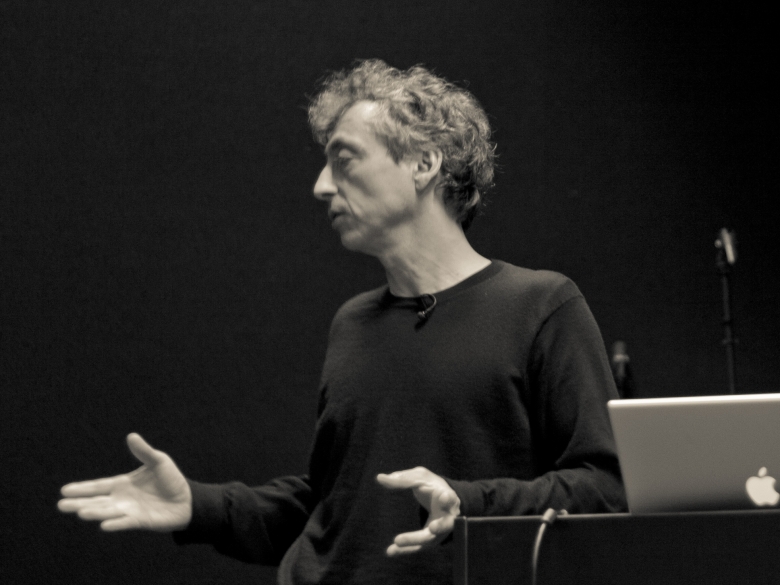
Frederic Chaubin during the lecture. Photo: A. Slapikaitė-Jurkonė, 2012
Frédéric Chaubin is the editor of the lifestyle magazine Citizen K. For over 10 years as a photographer he has shown particular interest in the outstanding architecture of the late Soviet Union and has brought it to the acknowledgement of an international audience. In this interview Chaubin talks about his attempt to combine the architectural experiences he has had around the world into a conceptual system.
How do you feel about your lecture Architecture and Desire?
It was quite complicated to prepare this lecture [http://www.archfondas.lt/lt/pokalbiu/irasas/architektura-ir-aistra]. I had this dubious idea of collecting the pictures I had shot through the years according to René Girard’s mimetic desire philosophy. In other words, my ambition was to discover what the buildings say about the builders and about their desires. According to René Girard, human beings are shaping themselves from birth until the end through a mimicking process. We copy each other, even in our aspirations. Desires are framed outside of us. They are the offspring of our social and cultural impregnations. For instance, we all know that taste is a cultural production. Still, we believe that we are making personal choices when we are just reproducing the values of the group we belong to. We might follow an opinion leader or covet what belongs to a rival, in each situation these impulses are brought through mixed influences, which keeps the complexity of it all. This whole story is exciting to unravel and it happens that I just noticed how much of the mimicking process is shaping architecture. Aside from its main purpose, it seems that architecture is satisfying some kind of wishful thinking. It is there to bring some kind of ideal vision related to history or ideology. And to achieve such a result it works through a large array of strategies. From the individual who builds his own house to a political system that may erase or rebuild history or culture, there are many-sided intentions that need to be deciphered. This complexity, this absence of simple truth is my obsession. By the way, this polysemic dimension of reality is the topic of a lot of fictional works. As an example, it’s the subject of Akira Kurozawa’s “Rashomon” movie. This ambiguity, everyone can feel it in its own personal life: you will never know the truth about the person you’re talking to or living with. And facts are as much ambiguous. As I am connecting history and architecture, there’s always a cultural background to the objects that I’m photographing, and what I notice is that the closer in time they are, the more diverse are the opinions on the subject. The older they are, the clearer the official version gets. This paradox shows in some way that the main task of history is not to collect facts but to make reality appear steadier than it is.
You mentioned that there are cultural layers in every object you take a photograph of, but bearing in mind your work on Soviet architecture, it seems to me you prefer to feel culturally and/or emotionally disconnected from the objects.
On the contrary, being culturally disconnected brings disorientation and therefore emotion. Considering Soviet architecture, of course I had this distance. It would have been less bewildering to work on things that happened in France. Of course there are archives and books if you read Russian but the books written at the time by Russians have this ideological bias which makes them useless. Even if sometimes they bring unexpected surprises. I didn’t have time in the lecture to read this interview of the architect of the Ministry of Highways in Tbilisi as well as the text written about Druzhba sanatorium. These two projects were very much related to sustainable economic and ecological attitude, which is really unexpected from the period when Chernobyl took place. The point I make is that these things are much more complicated and much more ambiguous than we would like them to be. There’s always the tendency to head towards simplification, which I did in the book I wrote, simplification which is useful for you, which sticks to your own personal choices, but if you’re honest, things are much more complicated.
 The Druzhba (Friendship) Sanatorium in Yalta, Ukraine was designed by Igor Vasilevsky and completed in 1986. The resort building's cylindrical form stands on a hill overlooking a beach. To enter, visitors cross a bridge encased in a glass tube and then descend into the complex, which is supported on massive legs housing the elevators and stairs. Photo: Frédéric Chaubin
The Druzhba (Friendship) Sanatorium in Yalta, Ukraine was designed by Igor Vasilevsky and completed in 1986. The resort building's cylindrical form stands on a hill overlooking a beach. To enter, visitors cross a bridge encased in a glass tube and then descend into the complex, which is supported on massive legs housing the elevators and stairs. Photo: Frédéric Chaubin
I will try to simplify the point of your lecture and then you can complicate it for me again. I heard it as an attempt to recognize how separate persons, people as a whole or the state are trying to build an environment according to the desirable idea they want to identify themselves with.
That’s right, but it’s not only about building desirable worlds, it’s also about denying the facts. Avoiding reality through strong ideological bias.
What is reality then and how do we avoid it through architecture?
For instance, at the very beginning of the lecture, there was the picture of the House of Soviets in Kaliningrad, which for me is a very good example. They had the ruins of a German castle there, I didn’t go very deep into it during the lecture, but this place had very strong symbolic value and it was used in some way by the German Prussian community for “escaping” Kaliningrad and keeping the memory of Königsberg. So at some point the Russian administration had to get rid of it as it remained an embarrassing trace of the past. But instead of leaving an empty space they built this House of Soviets with a kind of anthropological aspect. It sounds like a joke, but they did it. It’s deliberately frightening.
This strategy is very similar to the “monumental theology” that was worked out by the Spanish XVII century Jesuits. Like the Baroque churches from the counter-reformation this Kaliningrad monster is pure propaganda. It’s expressing the power and the strength of the Soviet Union and the fact that the Soviet Union is there and there’s nothing one can do about it. So this is a way of rewriting history – the very common practice of erasing the traces. You can find examples in different parts of the world and in different situations. You can do it in a very straight forward way, quite aggressively or you can come to some compromise with the local architects, like the Soviet architecture that took place in Central Asia. You would have a shape of a typical Soviet building relating to the considered purpose, for example a Lenin museum; you can find 100 of them all around the Soviet Union – all huge boxes. And then there’s the work that the architect Rozanov undertook, Islamizing the Lenin museum, creating this aesthetical connection between Soviet ideology and the Islamic world. Of course it was not only taking place in Tashkent, you can find this customizing process in the Caucasian or Baltic republics. And that is much smoother than just putting this robot head in the middle of the city. You only put such a robot head in the place where absolute control is needed.
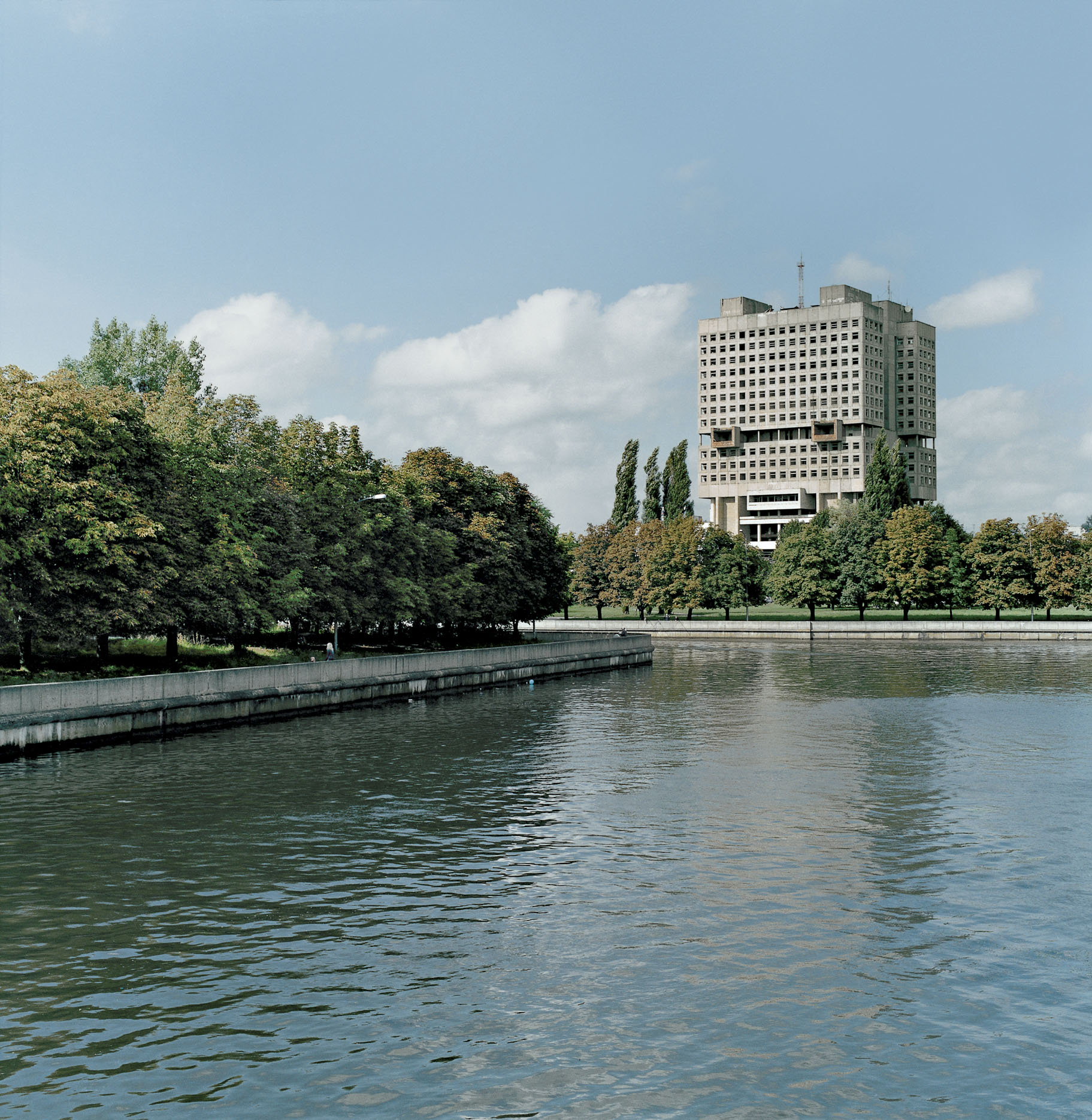 Construction of the House of Soviets began in 1960 and was intended to be the central administration building of the Kaliningrad Oblast. Continuation of development was stopped in the 1980s after the Regional Party Committee lost interest in the project and cut off funding. The design resembles a huge robotic face. Photo: Frédéric Chaubin
Construction of the House of Soviets began in 1960 and was intended to be the central administration building of the Kaliningrad Oblast. Continuation of development was stopped in the 1980s after the Regional Party Committee lost interest in the project and cut off funding. The design resembles a huge robotic face. Photo: Frédéric Chaubin
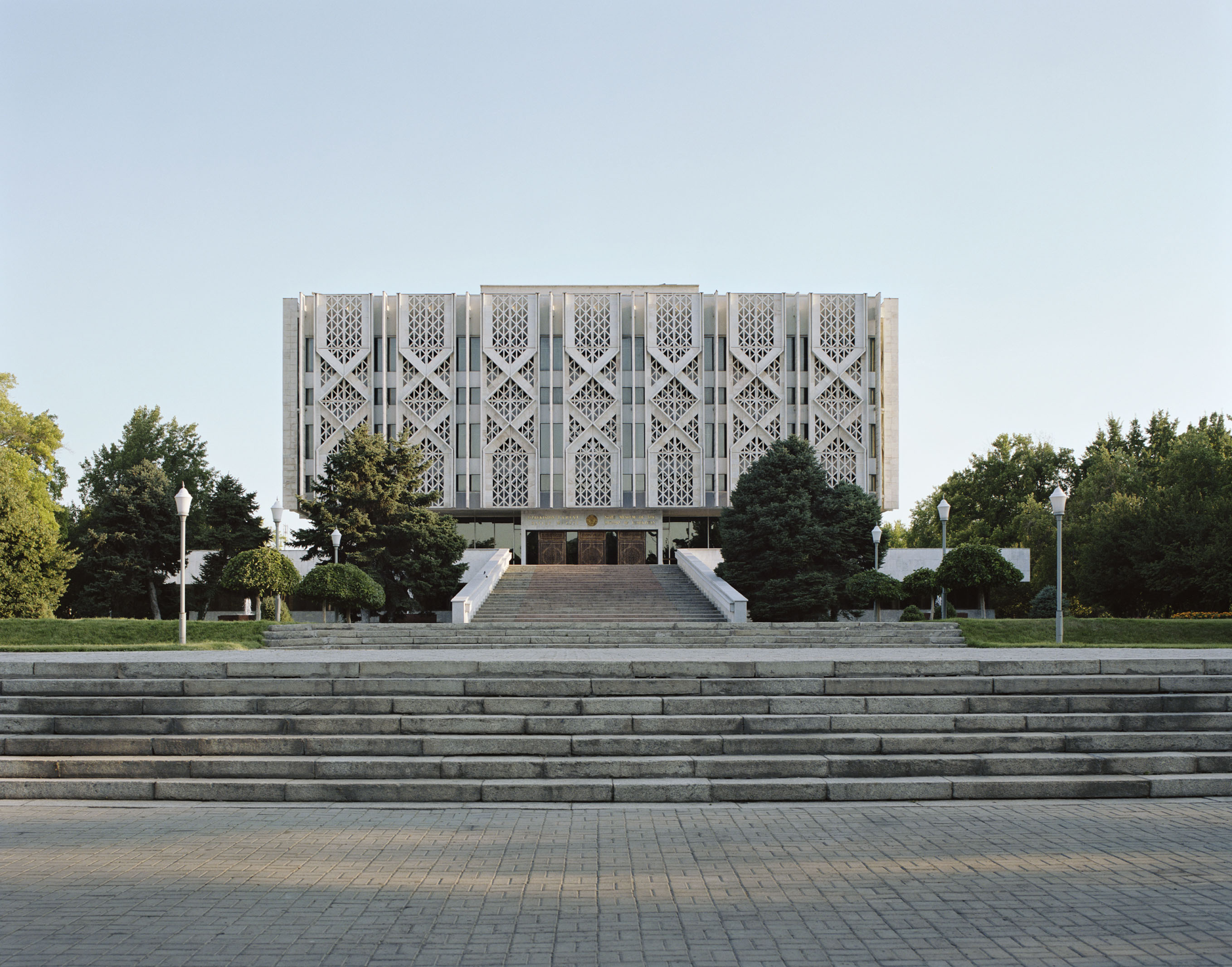 Lenin memorial in Tashkent, Uzbekistan, arch. Y. Rozanov, 1970. Photo: Frédéric Chaubin
Lenin memorial in Tashkent, Uzbekistan, arch. Y. Rozanov, 1970. Photo: Frédéric Chaubin
I always thought that there has to be some objects that contain all the oppressive strength, then you can have some kind of permission for local freedom, let’s say Soviet regionalism in this case. What do you see as Lithuanian or Baltic Soviet regionalism?
There’s a French intellectual of Georgian origin, Hélène Carrère d’Encausse, she’s in her 80’s now. During the period of Perestroika or even before she was writing books announcing the end of the Soviet Union. The main point she made was that a loosening liberal process was going to lead to the collapse. Recognizing some kind of legitimacy of the locals was, according to her, the start of the end. It didn’t bring the satisfaction that was expected, and on the contrary, it stimulated the will of independence. Still, it gave birth to some kind of transitional aesthetics. All along the steps of this story, culture expressed through these changes the weakening of Soviet influence. It’s something, as a concept, that you can apply all through history. When you see this you can understand basic anthropological rules or mechanism that can be noticed in the different periods of time and different places.
But how do those individually dreamt and made environments fit into your theory? Do you see the Gypsy (Romani) architecture in Romania as a part of some kind of ideology or a private dream? And, for example, Vilnius sanatorium in Druskininkai by Romualdas Šilinskas, which you adore, how does it fit into the theory?
You have to consider the specific position in which they are and the specific issues they are facing. What is interesting about Gypsies is that in some way they are totally out of a pedagogical impregnation of culture. They haven’t been taught architecture, you could say that they don’t have our prejudices, our bias, they have some kind of pure vision, if such a thing is possible.
Remind me of the historic reference that you pointed out in Romanian Gypsies houses, please...
This is related to the Girard’s theory of desire. These people are historically, socially, and culturally rejected from wherever they live or go. They do not integrate into local cultures. They of course interact, they have to, but they make money interacting in a way that we refuse. There’s hostility towards them, and there’s probably hostility coming from them towards us. While travelling with so little possessions they see the financial superiority of the other world and develop a fascination for it. As a result, when they manage to get wealthy, in Romania or Bulgaria, they reproduce in a clumsy way the Belle Epoque architecture displayed in the most beautiful cities of Eastern Europe. It’s quite obvious in the typology of the buildings they erect. You may notice lookalike cupolas and Bull’s eyes. But this gets to be completely astonishing when you realize that they are fake, just barber plates instead of windows. These people do not have the science of building. They reproduce or simply mimic the shapes. Rich gypsies copy the signs of bourgeois prosperity exactly as Soviet architects did, partly reproducing some of the American modernist masterpieces. Like, for instance, they erected the Druzhba Arch in Kiev twenty years after Eero Saarinen had completed the very similar St Louis Gateway. I think you are completely wrong if you consider that things just pop up spontaneously. They are the outcome of mixed influence. You will very seldom find spontaneously generated geniuses.
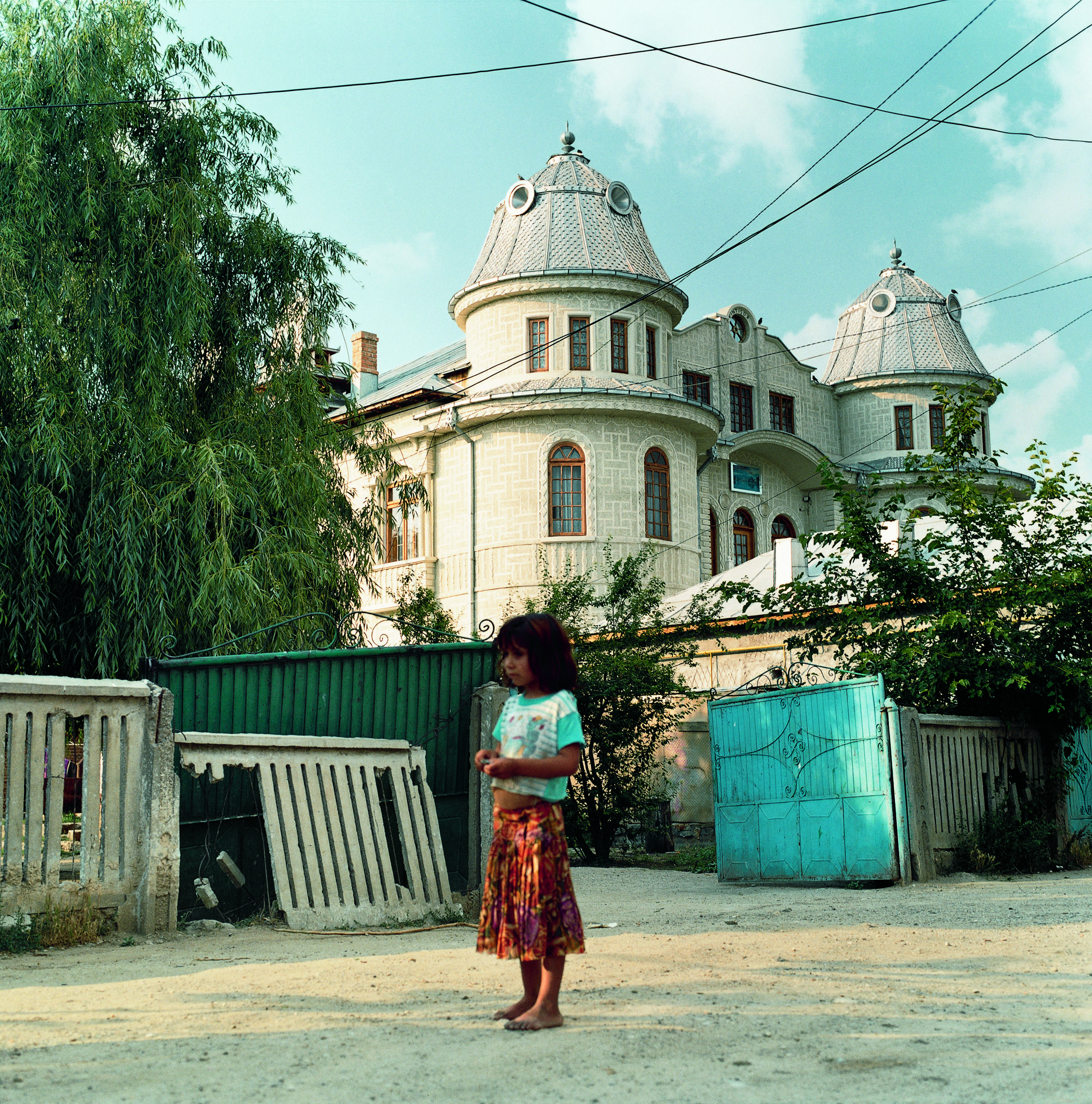 Gypsy private villa in Romania. Photo: Frédéric Chaubin
Gypsy private villa in Romania. Photo: Frédéric Chaubin
 Druzhba Arch in Kiev, Ukraine, sculptor A. Skoblikov, arch. I. Ivanov, S.M. Mirgorodski, K. Sidorov, 1982. Photo: Frédéric Chaubin
Druzhba Arch in Kiev, Ukraine, sculptor A. Skoblikov, arch. I. Ivanov, S.M. Mirgorodski, K. Sidorov, 1982. Photo: Frédéric Chaubin
But isn’t that the way you consider Vilnius sanatorium by Aušra and Romualdas Šilinskas?
Yes, but that’s the reason why so many people rejected it. You need to make a division between the standard productions and the buildings that are really totally unusual. I have some tenderness for eccentric people and their production. That’s another point that I didn’t mention in the lecture: monsters are very important and they have reason to be, they move the borders and they are beautiful because they are different. This statement has nothing to do with the current fascination for dramatic postmodern buildings or contemporary architect’s stardom. In Druskininkai the global harmony is unique because of the specific historical period in which it takes place. During the same years, in the late 70’s, the 1980 Moscow Olympic games were about to be. There were huge sites. They had to build a lot, and the political request was to achieve projects that could not be compared to productions from elsewhere. Nevertheless, if you consider the outcome, most of the buildings completed are very familiar, nothing really special. My interpretation is that the complex towards the West was already so strong at that time that they couldn’t avoid mimicking despite the request. That’s why when you find crazy things in this context it has a very strong specific value. Not to say that those orphans, for example Vilnius sanatorium and the Dostoevsky theatre in Veliky Novgorod by Vladimir Somov, belong to crazy vision and because of such a fact create a distance. Likewise, this church in Sicily which resembles Ledoux’s project, and in which the worshipers didn’t go just because it didn’t fit in with the idea they had of a church. This project is a social failure but at the same time it’s an outstanding building.
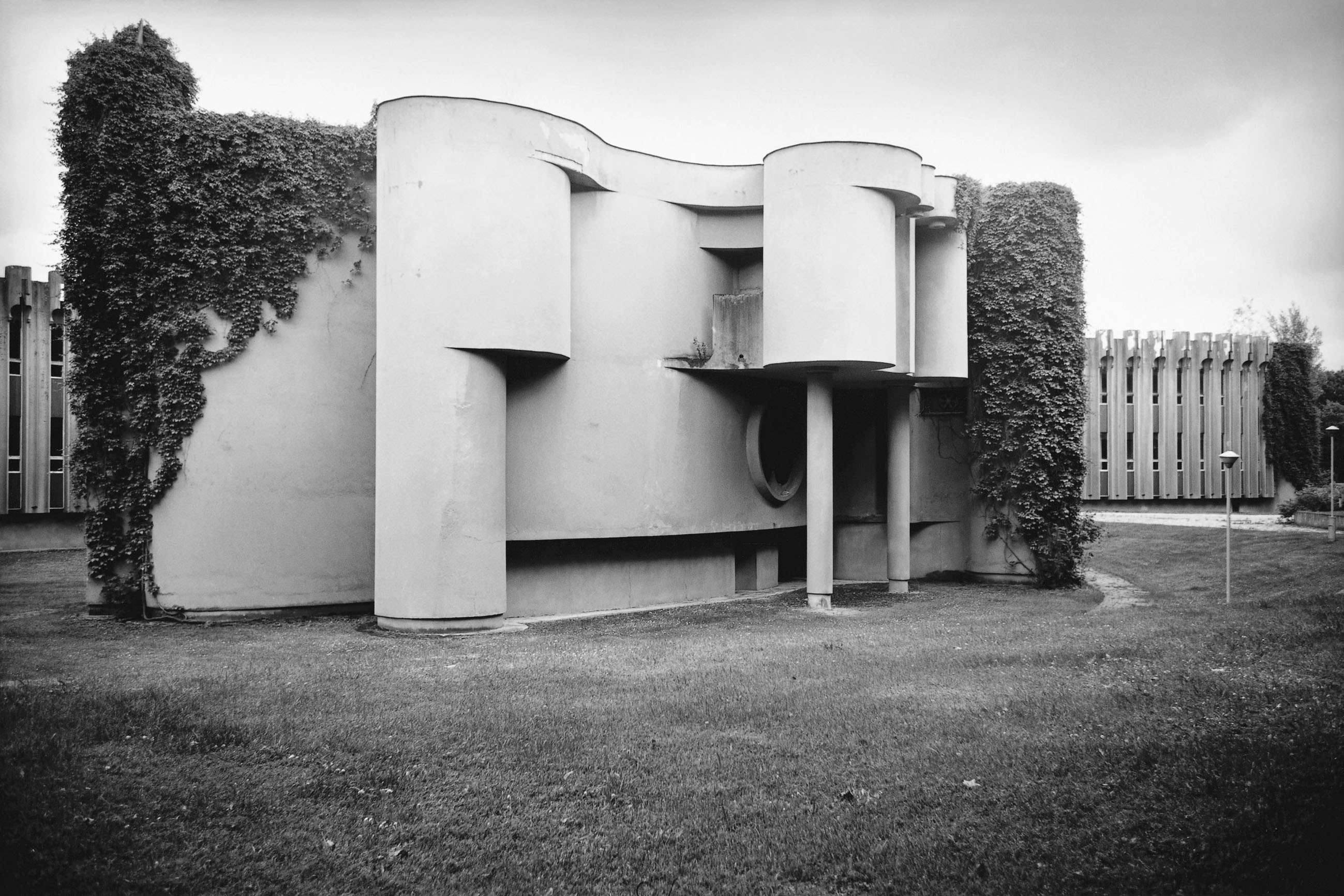 Sanatorium in Druskininkai, Lithuania, arch. A. and R. Šilinskas, 1975 – 1981. Photo: Frédéric Chaubin
Sanatorium in Druskininkai, Lithuania, arch. A. and R. Šilinskas, 1975 – 1981. Photo: Frédéric Chaubin
 Fyodor Dostoyevski theater in Novgorod, Russia, arch. V. Somov, 1987. Photo: Frédéric Chaubin
Fyodor Dostoyevski theater in Novgorod, Russia, arch. V. Somov, 1987. Photo: Frédéric Chaubin
 Gibelinas church in Sicily, Italy, arch. Ludovico Quaroni,1985. Photo: Frédéric Chaubin
Gibelinas church in Sicily, Italy, arch. Ludovico Quaroni,1985. Photo: Frédéric Chaubin
Again, trying to simplify, did you think of the places you took as examples as interconnected at some level? Does it have to do with a postcolonial approach?
To be honest, the places I talked about were the places I have been to, I simply had no other choice.
So why did you go there?
I selected locations in which I knew there would be a story to tell. For instance, I was born in Cambodia and I wanted to go back to the place. Being French I was interested in the traces of Western cultures. This was maybe a postcolonial approach. But I was not expecting to face, like in Dalat, such a literally influenced architecture. What is interesting is also the feedback: if you see British cities in India you would also find India inspired buildings in London. In the colony you have to emphasize your position of power and back home you can get a more “romantic” connection to the colony, using the “exotic beauty” of it and re-injecting it into the local architecture. The French did the same in Viet Nam. They had these hill stations in which you could find a collection of French vernacular countryside houses quite similar to the ones you would find in French villages. Except that in Dalat they were idealized. They reflected an ideal vision of the motherland. You can figure out how strong the disregard was to the local culture. You can also consider the physical necessity of recreating familiar surroundings. What is important for me here is this biological dimension – the way cultures interfere or do not interfere. You can find culture of connection in Istanbul, where you would find Art Nouveau Islamic architecture, you can find it in Mexico and in other different places, as shown throughout the lecture. There are different levels of interconnection, and if there’s no interconnection it has a political meaning. It’s a matter of strength and balance between cultures.
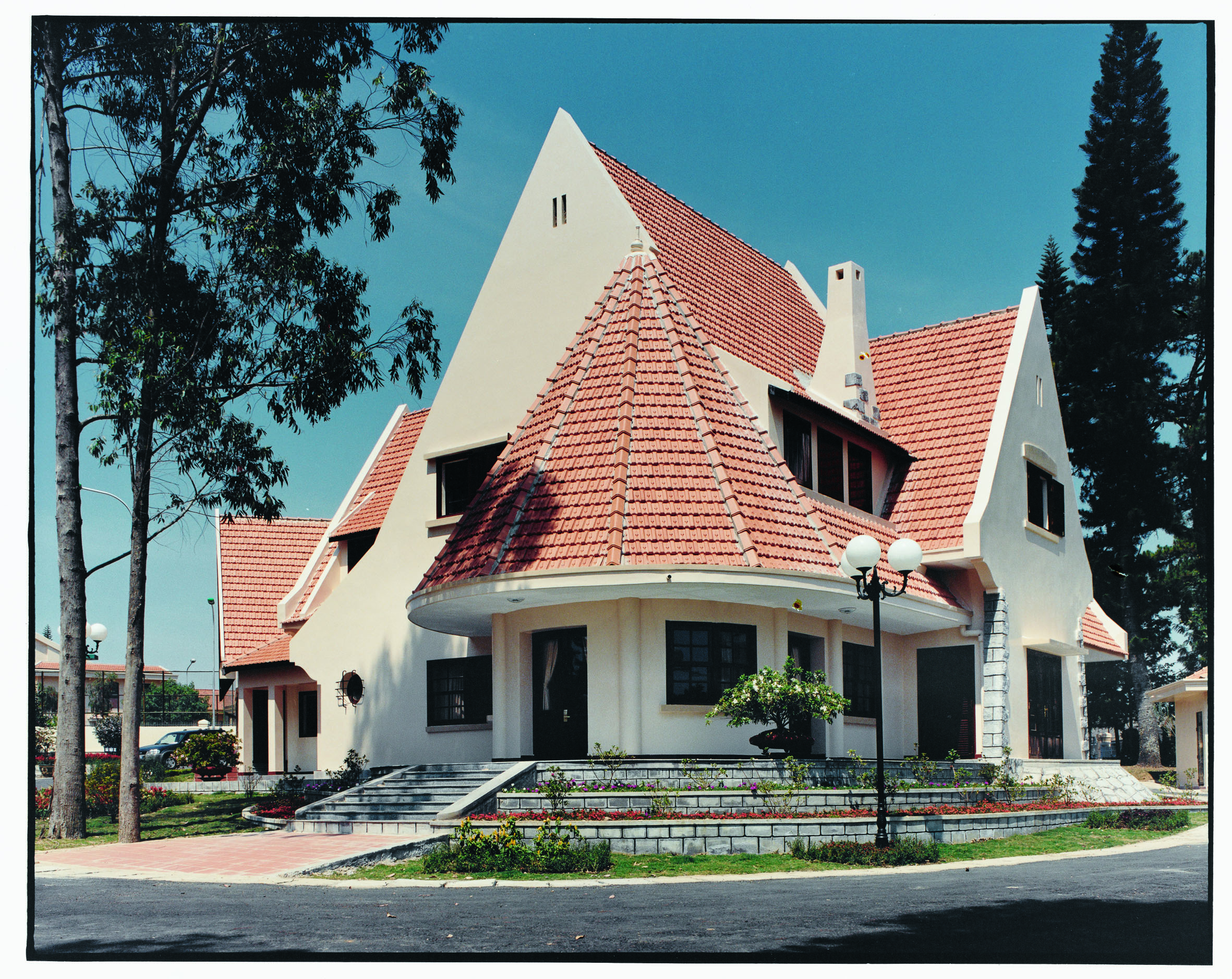 French colonial villa restored in Dalat, Vietnam. Photo: Frédéric Chaubin
French colonial villa restored in Dalat, Vietnam. Photo: Frédéric Chaubin
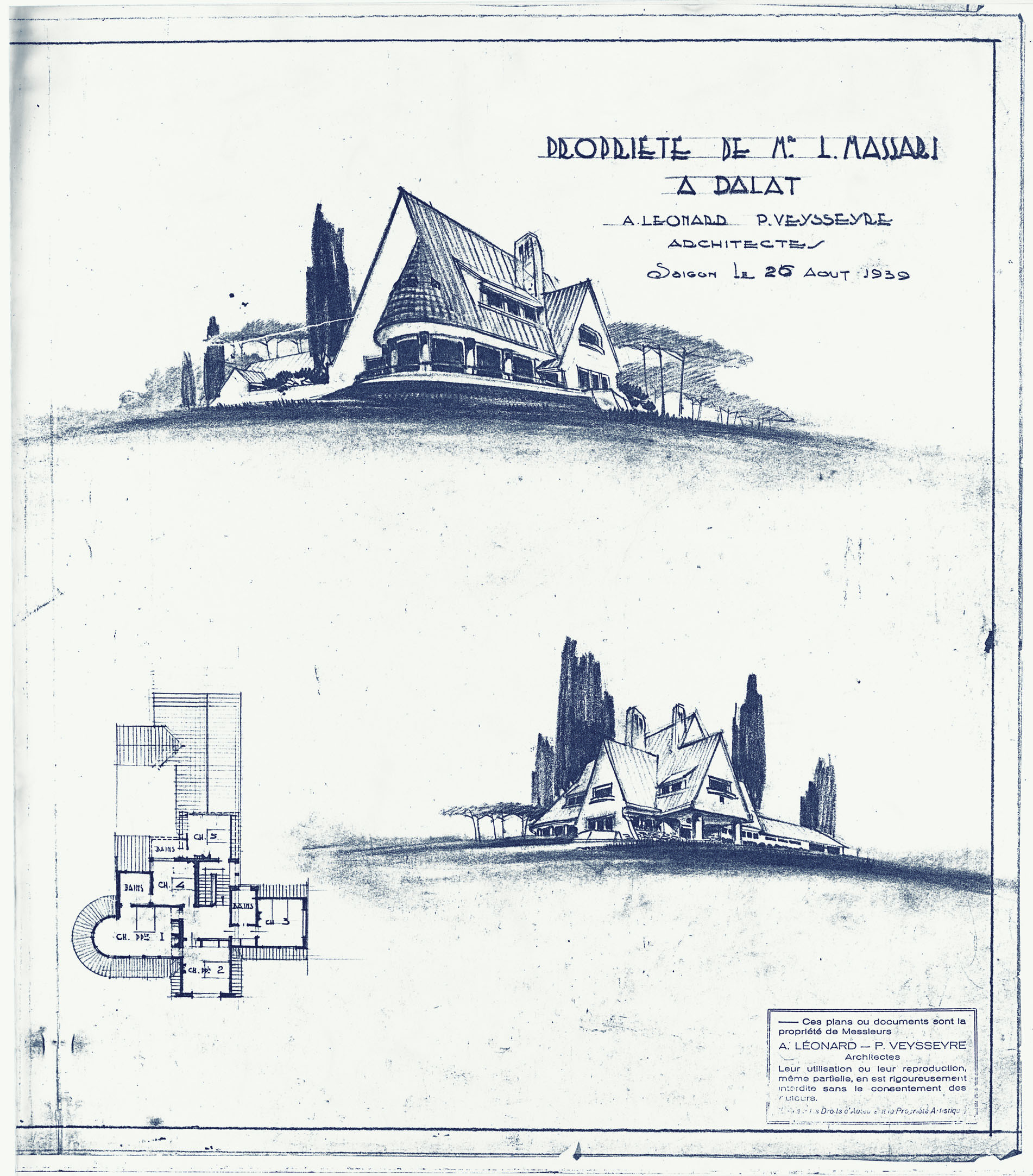 French villa in Dalat, Vietnam, arch. Paul Veysseyre, 1939
French villa in Dalat, Vietnam, arch. Paul Veysseyre, 1939
 Muslim mausoleum in Istanbul, arch. Raimondo d'Aronco, 1904. Photo: Frédéric Chaubin
Muslim mausoleum in Istanbul, arch. Raimondo d'Aronco, 1904. Photo: Frédéric Chaubin
When you were travelling, were you looking for these interconnections?
In all the stories I’ve been working on during these last 10 years, I wanted to apply my obsessions to them and try to understand if they could work as a whole. I eventually understood that what was interesting for me in all of those different subjects was their non-typical dimension. What they had in common was that in some way they were cheating the time or cheating the space. Like ectopic pregnancies, they grew at the wrong place. You may call it “ectopic architecture”. But my quest didn’t start with the intention of arriving at a conclusion, I just collected trips and through those trips, pictures and stories. Having to produce this lecture here in Vilnius I was either going to mention once again the CCCP book or get into something new. I’ve been focused on CCCP book for quite a while and I really wanted to turn the page. The interesting facts that can be noticed in Soviet architecture I could also find them in different kinds of architecture, especially the psychological dimension. What is in fact at stake? Why do you have to build an English looking school in Darjeeling? How is it that Soviet summer camps in some way look the same as Mussolini’s summer camps? In such a case, you realize that those systems were teaching kids in the same way – instead of leaving the children to play with their own wooden guns in their courtyards, they would provide a uniform. To interconnect the two systems would even be a subject for a book. You could make a very beautiful book on Pioneer camps, but it’s much more interesting if you make it about camps in totalitarian structures. It’s obvious and at the same time frightening that the psychological principles are the same. And those psychological mechanisms are what Girard called the mimetic desire. They gave to the kids various skylines – war, progress, future, space – and moreover collective goals, without allowing any individual perspective.
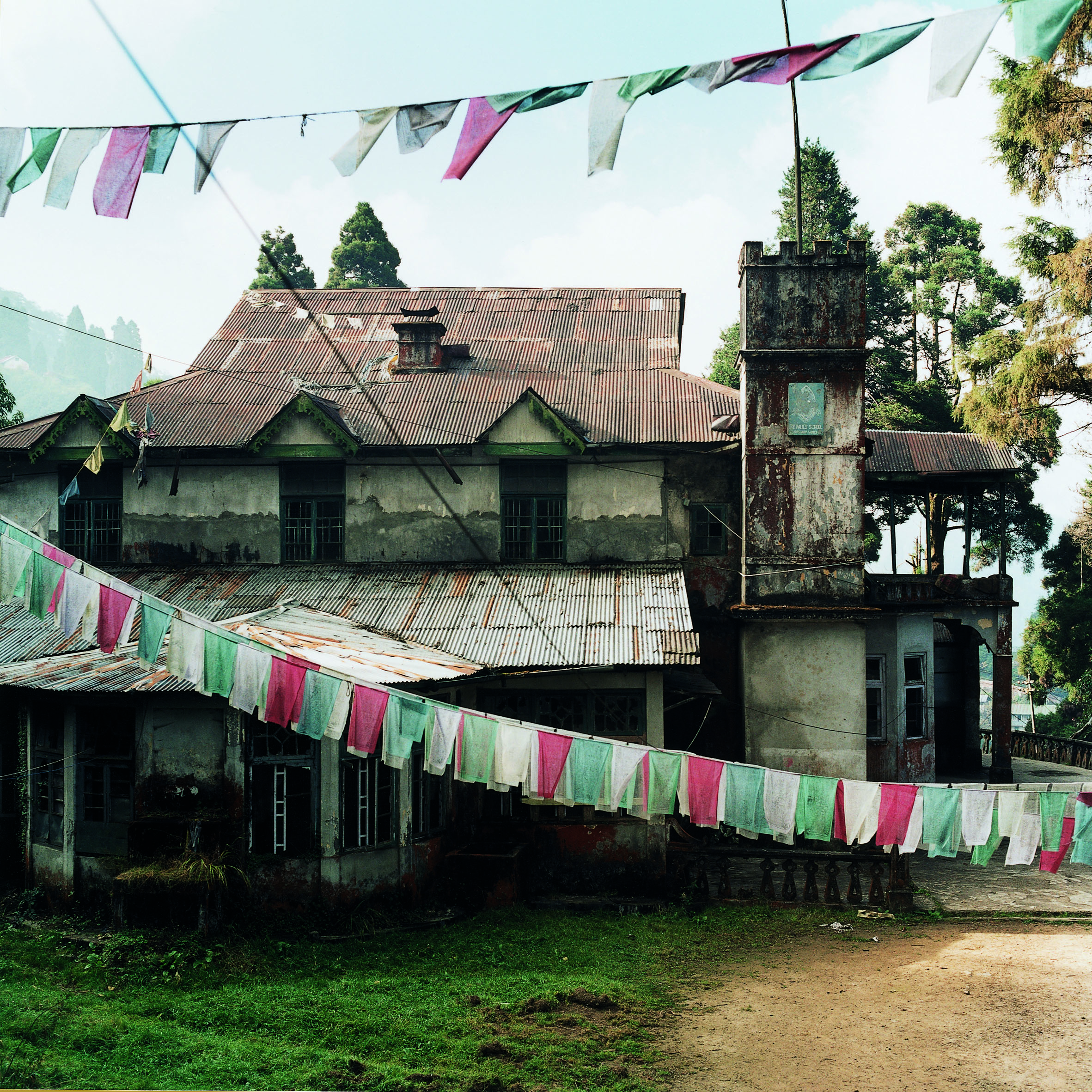 Darjeeling former boarding school in India. Photo: Frédéric Chaubin
Darjeeling former boarding school in India. Photo: Frédéric Chaubin
The same feeling you get looking at Druzhba and other sanatoriums, it’s made for the flock, no space is left for individual wishes. It looks like a beehive, it’s structured thinking about where you should go on in the daytime and where you should go at night, it reminds me a little bit of a jail. The environment seems to be hostile. The building does not melt into it. The surroundings are kept at a distance. It’s fun to compare this with the very sensual and easy going strategies of Niemeyer when building his private houses. They melt into the jungle. Despite the small size of the constructions, the glass walls virtually open the space, which seems surprising and paradoxical. These villas belong to nature instead of confronting it. It’s another philosophy. I just wanted to show these opposing sides, these different ways of organizing space that are the result of global visions.
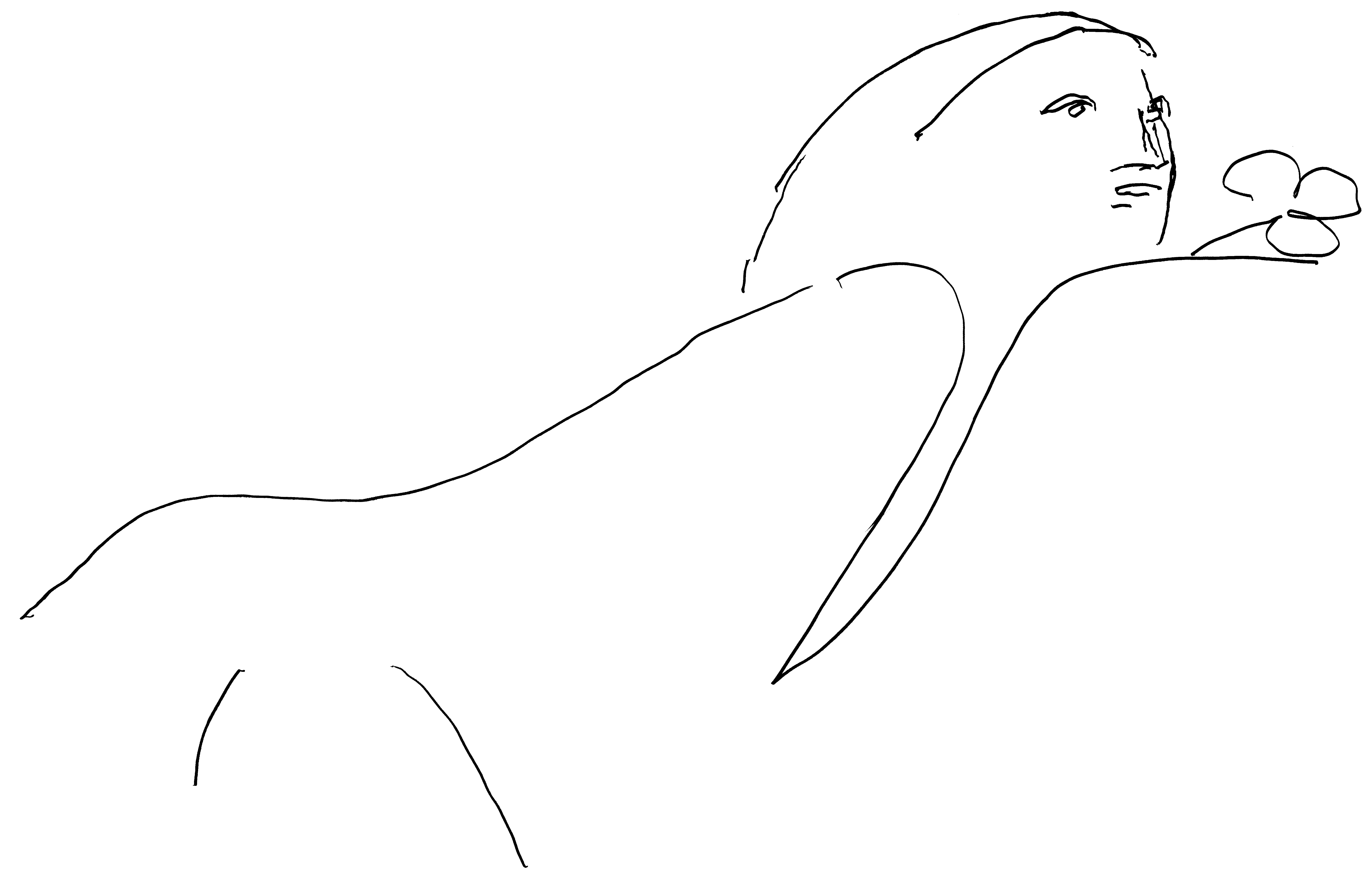 Drawing by Oscar Niemeyer
Drawing by Oscar Niemeyer
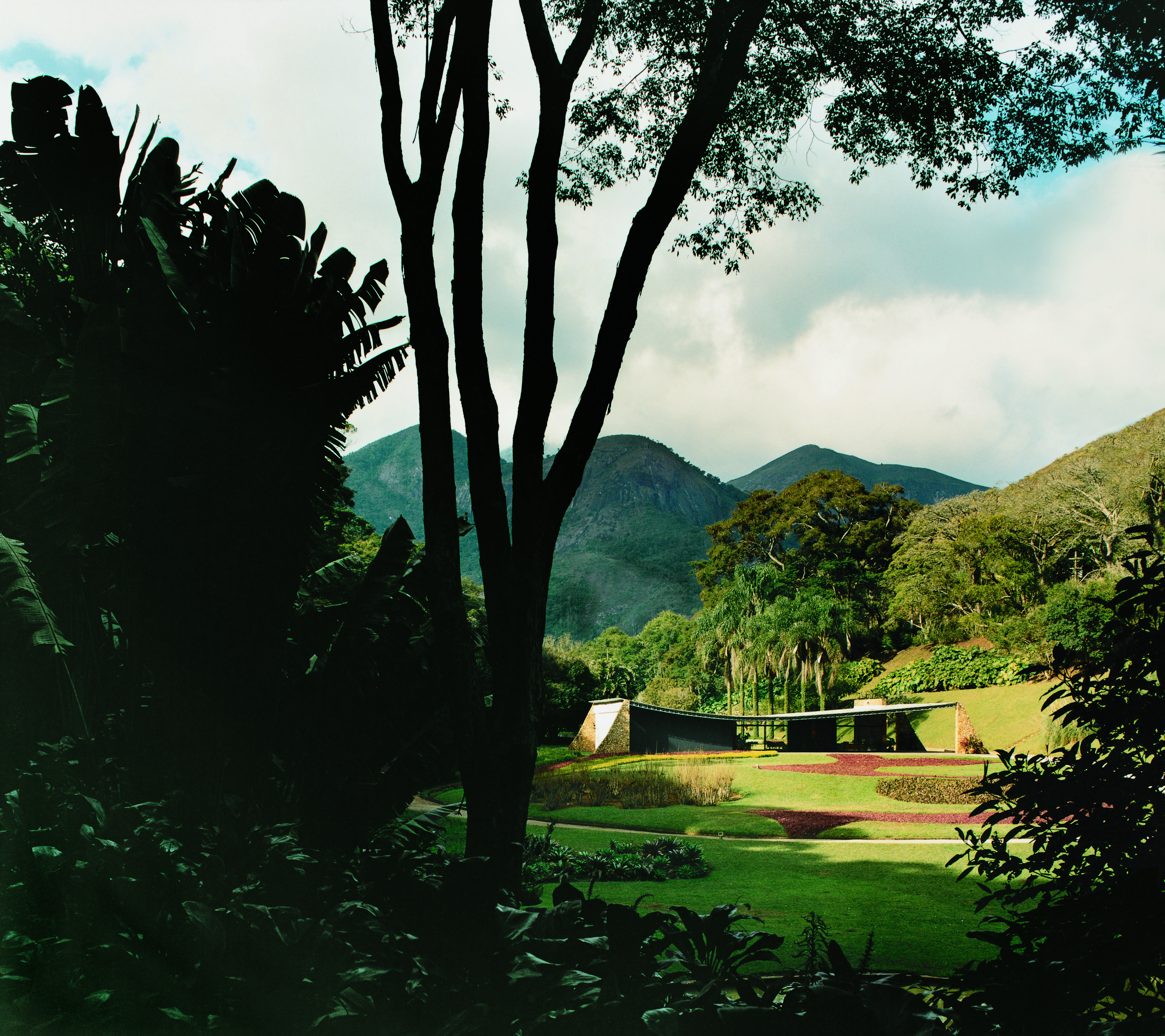 Villa Cavanellas in Petropolis, Brasil, arch. Oscar Niemeyer, 1954. Photo: Frédéric Chaubin
Villa Cavanellas in Petropolis, Brasil, arch. Oscar Niemeyer, 1954. Photo: Frédéric Chaubin
When we were talking after the lecture you mentioned you’re interested in Aby Warburg’s works, which made your state of mind a little bit clearer for me.
There is this idea that some shapes related to the past go through “nachleben”, some kind of afterlife destiny. Those shapes from the past have lost their original meaning but still remain around like some kind of ghost patterns that remain visible through time. In some way these traces feed us anthropologically. And they haunt the architect’s mind.
Straipsnis PDF formatu:
http://leidiniu.archfondas.lt/sites/default/files/149-158_interview_frederic%20chaubin.pdf




